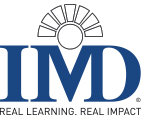- Learning
The Curse of 70-20-10
Michael Stanford, Director or Partnership Programs at IMD, disputes the value of 70-20-10 as it separates on-the-job experience from formal development.
Just type into Google "70-20-10" and you'll find a long list of links that refer to the 70-20-10 model of learning and development. The model states that 70% of development comes from on-the-job experiences, tasks and problem solving, 20% through feedback and from working with positive and negative role-models, and 10% from formal or "classroom" training. The model has been around for a long time, and judging from the links that a Google search triggers, many organizations still refer to it when they describe their approaches to organizational learning and development.
Not bad for a model that doesn't make a lot of sense. It's, as Google shows, still one way of approaching learning and development, but one that is dated and flawed. Leaders in L&D can no longer afford to separate on-the-job experience from formal development and there are two reasons for this.
First, the 70-20-10 model assumes that most executives have a structured approach to on-the-job learning, that they have the time and mindset to develop new ideas and concepts, to experiment with these ideas in the course of their daily work, to reflect on their effectiveness, and to distil what they learn into new actions and behaviours. This is a misguided assumption. Most executives are usually too busy doing to focus enough of their bandwidth on reflecting, synthesizing, conceptualizing and experimenting. They may learn through trial and error, but their learning is neither as dramatic nor as efficient as it would be if their on-the-job experiences were approached through a lens of formal learning.
Second, the model assumes that "formal training" is somehow necessarily removed from daily work. This separation would be a surprise to professional athletes, who often train on the same terrain on which they compete, or to a mountaineer who prepares for a Himalayan climb by improving his or her fitness and technique on smaller climbs closer to home. It should also be a surprise for both learning and development professionals and the executives under their care. Formal development must always be undertaken with a purpose, and that purpose must always be directly or indirectly focused on the real-world challenges of the organization and the real-world development needs of the executive. We are in the business of what many people would think of as "formal development," but it's a rare client who asks us for learning initiatives that aren't expected to improve the performance of the organization or add to the strengths of its people in real and meaningful ways. So-called formal development is almost always designed with the on-the-job challenges in mind.
The most effective learning and development initiatives don't make a distinction between on-the-job and formal learning. The point is to blend the two: to apply a learning mindset to on-the-job experiences so that executives are always learning, and to ensure that even formal development uses real-world challenges as the main laboratory for personal and organizational development. When clients ask for help in developing "wow" brands, or to help the top executives in the organization to become more innovative and inspirational leaders, or to help the organization to experiment with and apply new business models, the clients aren't separating on-the-job challenges from formal learning. The client wants both.
It's the job of executive learning partners to make sure that the so-called "formal development initiatives" they create with the client are so deeply ingrained into the client's real-world issues that it's impossible to separate the two. Leaders undertaking learning initiatives need to be able to return to their on-the-job challenges with a new appreciation for how a formal approach to learning can help them extract new ideas and different ways of working every single day of their working lives.
70-20-10? How about 100. Every learning experience, whether it takes place in a structured setting or in the chaos of every day work, should apply a disciplined learning mindset to real-world challenges.
Michael Stanford is Executive Director of IMD's Partnership Program business, and serves on the Boards of the University Consortium for Executive Development (UNICON) and the International Consortium for Executive Development Research (ICEDR).
IMD is a top-ranked business school, expert in developing leaders, transforming organizations and creating immediate and long-term positive impact.
ARTICLES YOU MIGHT LIKE
VIEWPOINT
For Thomas Misslin, transformation rather than training is the aim of executive education at emlyon business school
DEVELOPING LEADERS QUARTERLY MAGAZINE AND WEEKLY BRIEFING EMAILS


































